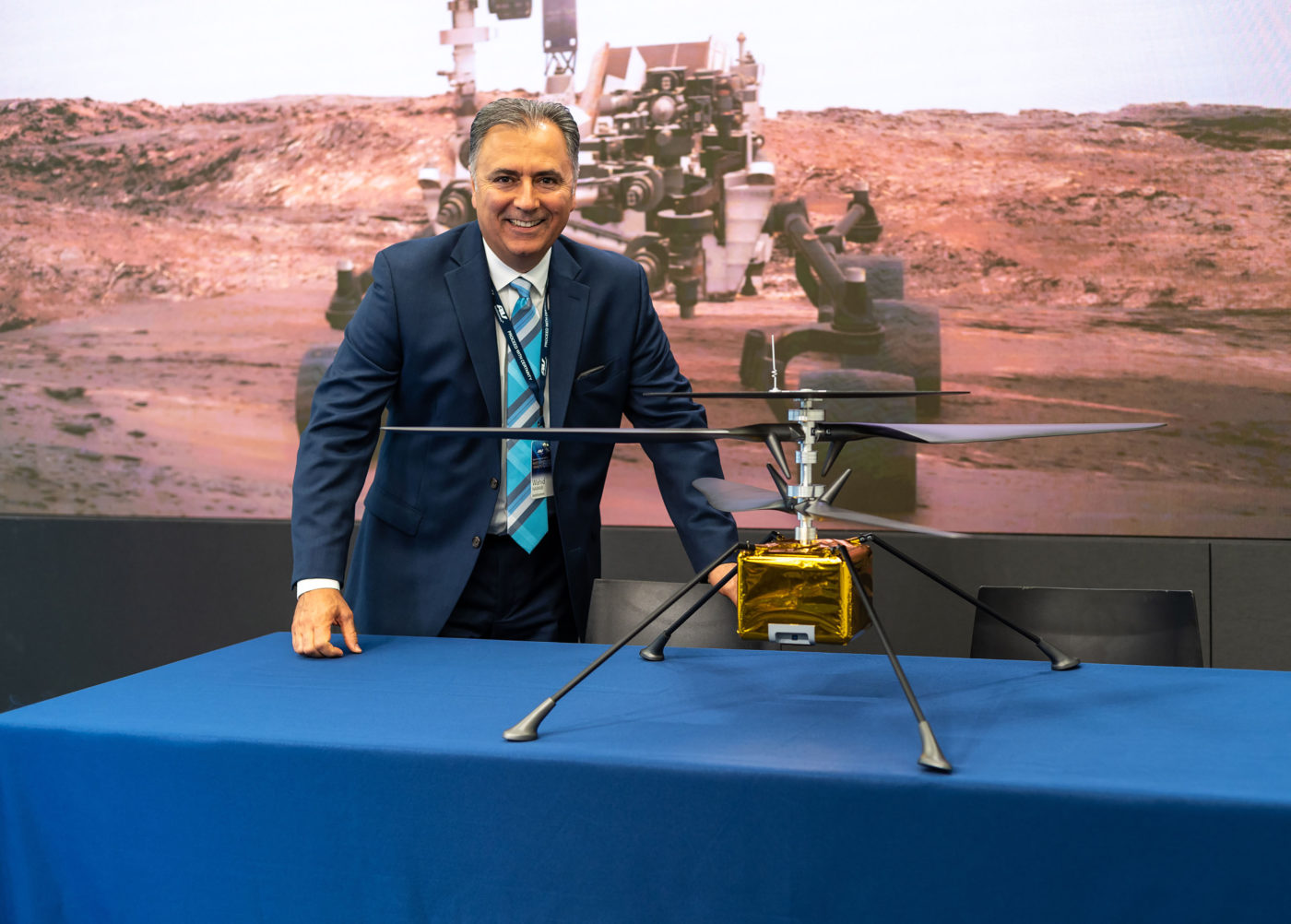At a briefing on July 3 at New York City’s NASDAQ MarketSite, AeroVironment, Inc. revealed its critical role in collaborating with NASA’s Jet Propulsion Laboratory (NASA/JPL) in Pasadena, California, to build the drone helicopter recently selected by NASA/JPL’s Mars Exploration Program, and displayed a model of the Mars Helicopter, which is planned to fly on Mars in less than three years.

“AeroVironment’s deep, rich and diverse history of innovation combined with our experience with near-space aircraft like Pathfinder and Helios make us uniquely suited to collaborate with NASA and JPL on this historic, interplanetary venture,” said AeroVironment president and chief executive officer Wahid Nawabi.
Flying at nearly 100,000 feet on Earth is much like flying on the surface of Mars – same air density – so AeroVironment used airfoil design principles and simulation tools the technology company learned from record high-altitude flights and incorporated them into the Mars helicopter design.
“The Mars Helicopter effort also benefits from the ultra-lightweight and ultra-high-precision methods integral to our nano projects that have been developed in our MacCready Works laboratory, where we’ve assembled a dedicated team of the industry’s brightest and most experienced thinkers to solve some of today’s greatest technological challenges,” Nawabi said.
AeroVironment first developed subscale Mars helicopter prototypes to test and demonstrate the feasibility of lift in the thin Martian atmosphere. Then in May 2016, AeroVironment delivered to NASA/JPL a Mars Helicopter rotor and landing gear prototype that was integrated with a JPL-developed controller and demonstrated free flight in a simulated Mars atmosphere, proving that it is possible to fly on the Red Planet.
Next, AeroVironment delivered major helicopter subsystems in the fall of 2017 for integration into Mars-representative engineering development models. JPL built two engineering development model Mars Helicopters, integrating the AeroVironment rotor, landing gear, fuselage shell and solar panel substrate together with JPL-developed fuselage composed of flight avionics, onboard power, telecom, flight control and sensors into two models.
One of the development models was used for flight demonstration in JPL’s large 25-foot space simulator, and the other for environmental testing, including thermal tests to ensure the vehicle can endure the frigid Mars nights, and vibration tests to make sure it is rugged enough to survive launch. Both vehicles passed the rigorous tests, paving the way for the development and fabrication of the final, Mars-bound version.
AeroVironment is currently building the flight versions of their subsystems which will be integrated with other subsystems into the vehicle that JPL is building. The plan is for JPL to then install the finished Mars Helicopter into the Mars 2020 rover for its ride to a Martian landing site, still to be determined.
The Mars Helicopter project is led by NASA JPL with team members across JPL, AeroVironment, NASA Ames and NASA Langley. The AeroVironment team has worked closely with NASA rotorcraft experts at the NASA Ames and Langley research centers and with JPL electrical, mechanical, materials, vehicle flight controls, and systems engineers.
AeroVironment’s contributions to the first Mars drone include design and development of the helicopter’s airframe and major subsystems, including its rotor, rotor blades, hub and control mechanism hardware. The company also developed and built high-efficiency, lightweight propulsion motors, power electronics, landing gear, load-bearing structures, and the thermal enclosure for NASA/JPL’s avionics, sensors, and software systems.
The press briefing featured high-impact visuals and models of many of AeroVironment’s innovations, including the Snipe nano drone – the latest tactical UAS innovation from AeroVironment that provides today’s defenders with critical information whenever and wherever it is needed – and the Switchblade Lethal Miniature Aerial Missile System (LMAMS).
AeroVironment recently received Switchblade orders from the U.S. Army and U.S. Marines Corps through Urgent Needs Statements.









